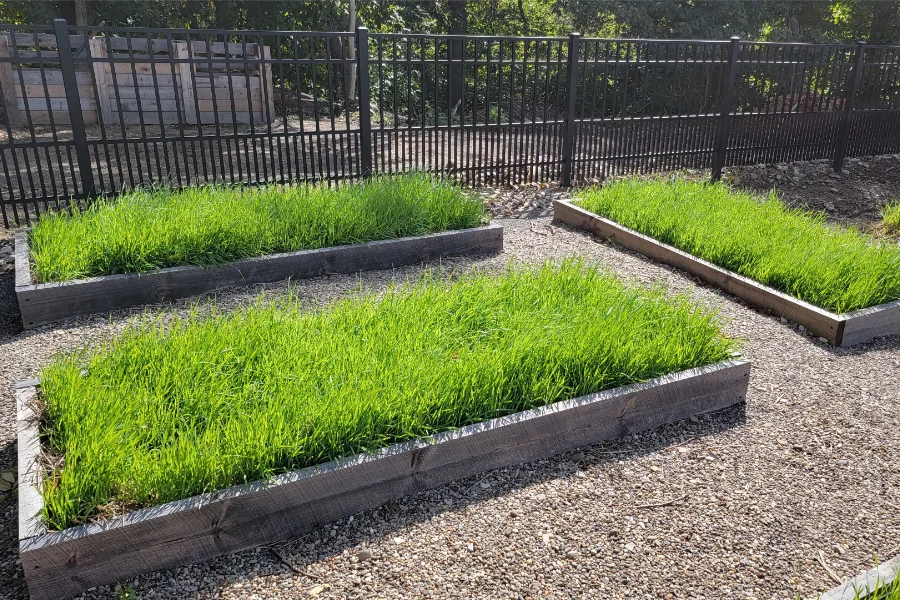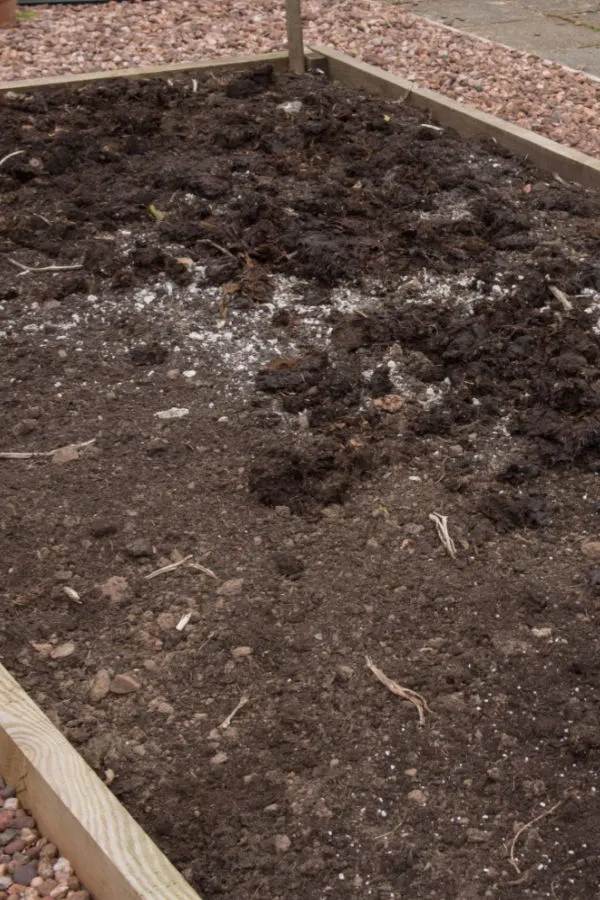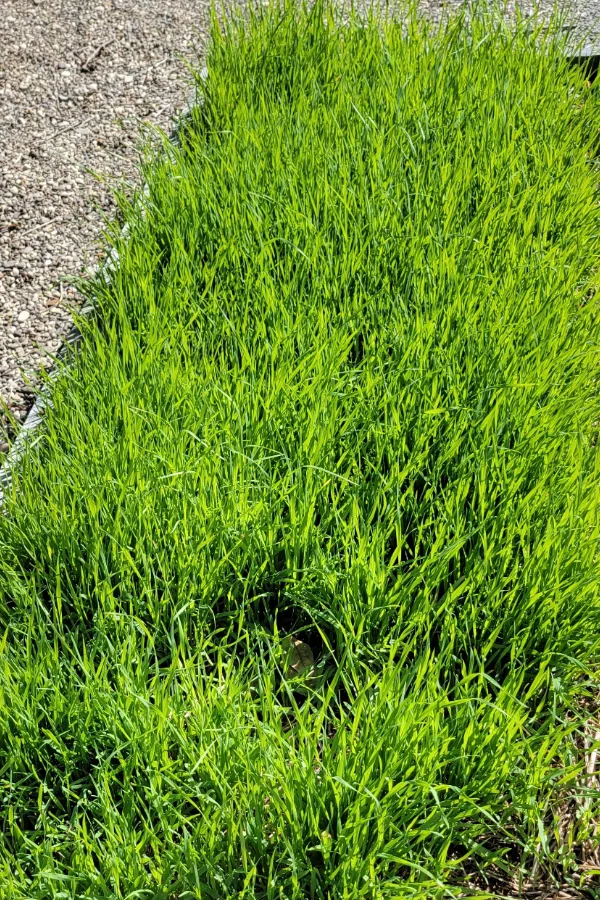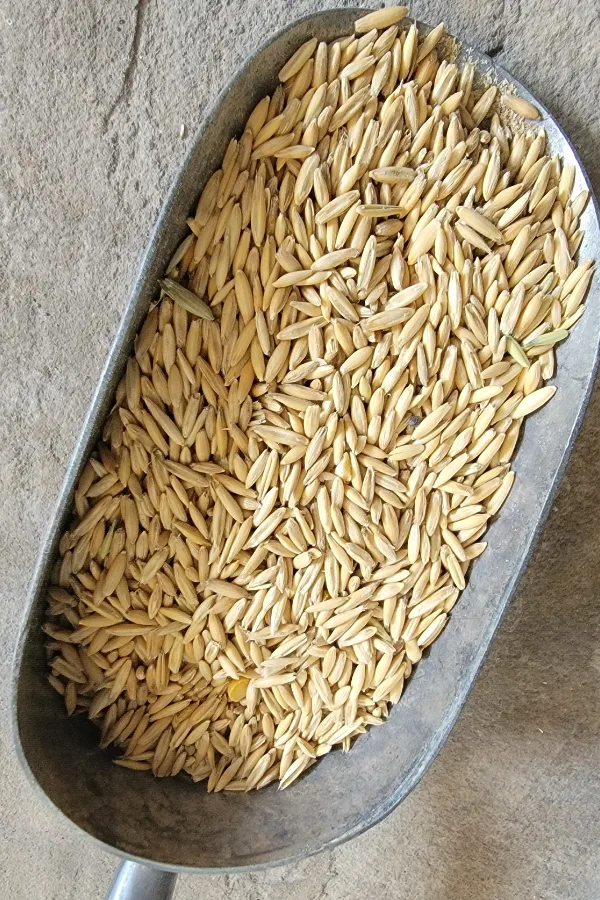If you are looking for the best cover crop for your raised beds this fall, look no further than growing oats! Not only are they easy to sow and grow, they are also an incredibly low cost way to help protect and re-energize your soil.
One of the most difficult tasks for raised bed gardeners is finding a way to recharge the soil in their confined bed spaces. Vegetable crops, herbs and flowers all take nutrients from the soil as they grow. And in a raised bed setting, those nutrients can’t easily be replaced.
Much like a hanging basket or container plant, the soil in a raised bed has little ability to absorb additional nutrients from the surrounding landscape. In fact, it has no ability at all to recharge without outside help.

Unfortunately, unless you can replenish the nutrients and organic matter, the next set of plants to grow in the soil will suffer. And the problem will only accelerate with each passing year.
Even though you can use fertilizers to help offset a soil’s lack of nutrients, they don’t help to restore or build healthy soil structure. And without good structure, no matter how much fertilizer you apply, the plants can have serious issues absorbing it and moisture into their roots.
Recharging Raised Bed Soil With A Cover Crop
So what is the best way to recharge and revitalize raised bed soil? For starters, adding compost to your raised beds every year is a good start. Compost is full life. It contains a long list of nutrients that can help to replenish weak soil. Even better, it’s also teeming with beneficial organisms and bacteria. See: How To Make Great Compost
But beyond working a few inches of compost into your raised beds each year, one of the best methods of all to revitalize and re-energize raised bed soil is with a cover crop.

A cover crop’s roots help to break up the soil and keep it loose and workable. At the same time, as it grows, it protects your soil from erosion. When raised bed soil is left bare, its nutrients can quickly wash and blow away from winter’s rains, snow and wind.
Even more, as a fall cover crop grows thick, it protects the soil from weeds. The dense growth of a cover crop helps to crowd out existing weeds and weed seeds. All while protecting the soil from any additional weed seeds from blowing in and taking up residence.
So are all cover crops the same? Especially when it comes to powering and protecting the soil within them? Although there are several good choices for cover cropping raised beds, there is one that stands head and shoulders above the crowd – and that cover crop choice is cereal oats!
The Best Cover Crop For Raised Beds
The Power Of Growing Oats
Oats have a long list of attributes when cover cropping raised beds. For starters, the cereal grain is one of the least expensive of all seeds when it comes to cover crops. But even better, it grows incredibly fast!

Not only are oats fast to germinate, once they sprout, they grow quickly to thicken up and cover bare soil. Oats can germinate in as little as five to seven days. And they can do so even in the cooler and wet conditions that often accompany the fall season.
Adding to their allure, oats can adapt to nearly any soil condition. Oats grow equally well in loamy, rich soils, harder, dense clay types – and everything in between. Best of all, they require little to no maintenance once you plant. Not only are they highly drought resistant, they can also handle excessive moisture fairly well too.
What Oats Do For Your Raised Bed Soil – The Best Cover Crop For Raised Beds
So what do cereal oats do for your raised bed soil? As oats grow and establish, their roots dig in underneath to help aerate, break up and loosen the soil. Up top, the foliage of the grain grows thick and tight, crowding out weeds and weed seeds.
Oats also add a tremendous amount of organic matter and nutrients to the soil as they break down. As important as the nutrients are for recharging your soil, it is the organic matter oats bring that really helps to keep soil healthy, alive and strong.

But perhaps best of all, cereal oats die off with the first hard freeze of the season. As winter progresses, the thick mass of foliage dies off in winter but stays in tact enough to provide great protection for your raised bed soil.
This is a huge benefit for raised garden growers. Unlike other cover crop choices, there is no need to dig under the crop or continually mow it back to kill off the crop. You can simply clip off, mulch or mow the dead oat foliage on top in the early spring, and plant away!
How To Plant Oats In Raised Beds – The Best Cover Crop For Raised Beds
Planting oats couldn’t be easier in raised beds. As soon as you clear your crops, simply rake the soil even, and sow the seed. The seed is large enough that you can sow by hand for average size raised beds. Once in place, simply tamp lightly with a rake to set it into soil. It does not need to be covered to germinate.
As for how much seed to sow, a good rule of thumb is to scatter twenty five to thirty seeds per square foot, or much like you would when planting grass seed. A typical 4′ x 8′ raised bed area can be planted with a half pound of seed.

To finish, water the seed in and cover with a light coating of straw. The straw will help hold moisture in for faster germination. It also helps keep the seed safe from birds and animals trying to get a quick meal.
Here is to sowing and growing oats as a cover crop for your raised beds this year, and to growing better than ever next year with healthier and more vibrant soil!
Follow Our Facebook Page For Great Gardening Tips And Advice! This Is My Garden Facebook Page
This Is My Garden is a garden website created by gardeners, for gardeners. Jim and Mary Competti have been writing gardening, DIY and recipe articles and books and speaking for over 15 years from their 46 acre Ohio farm. They publish three articles every week, 52 weeks a year. Sign up today to follow via email, or follow along!
